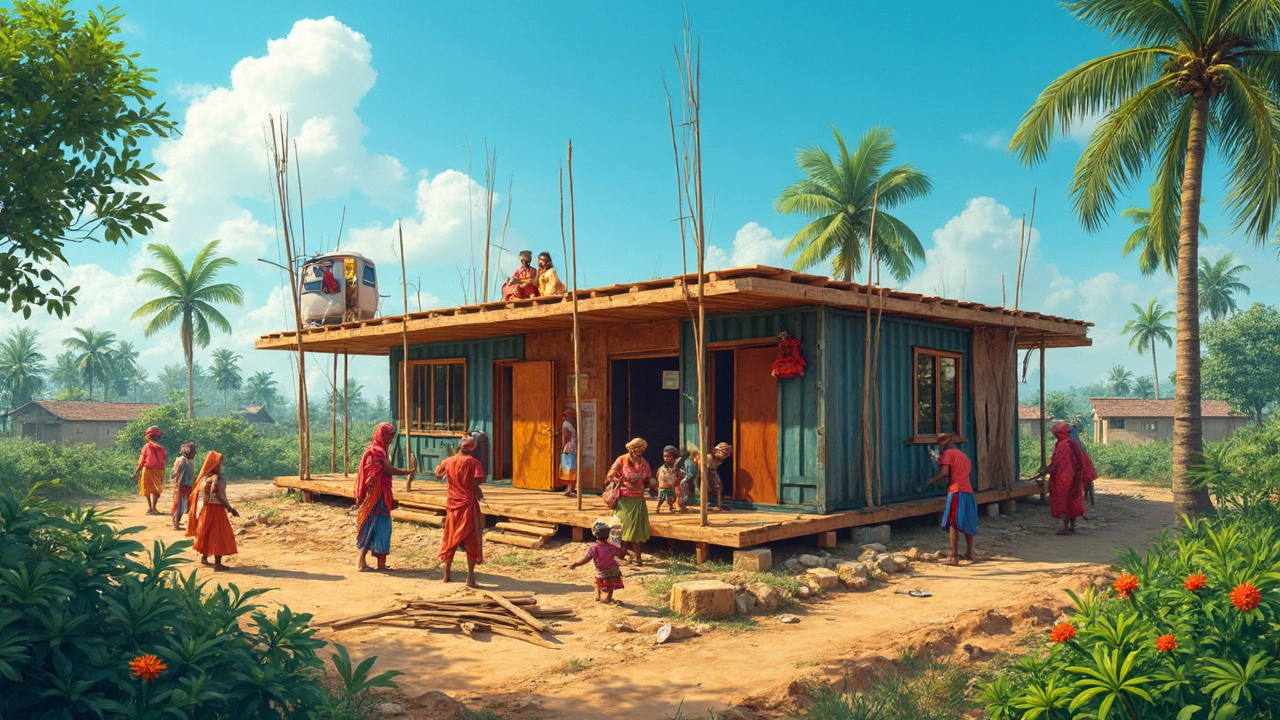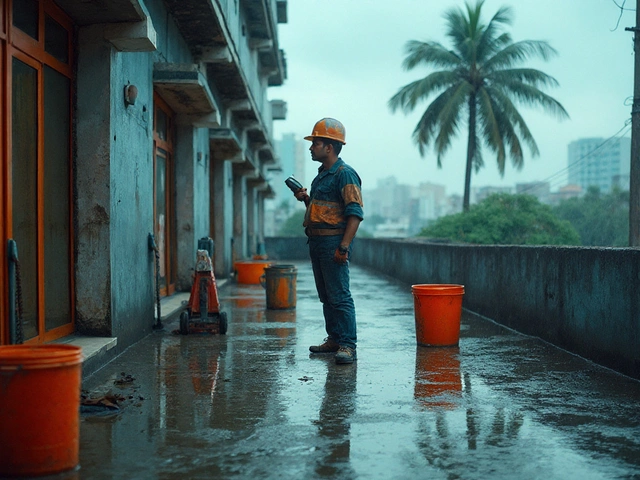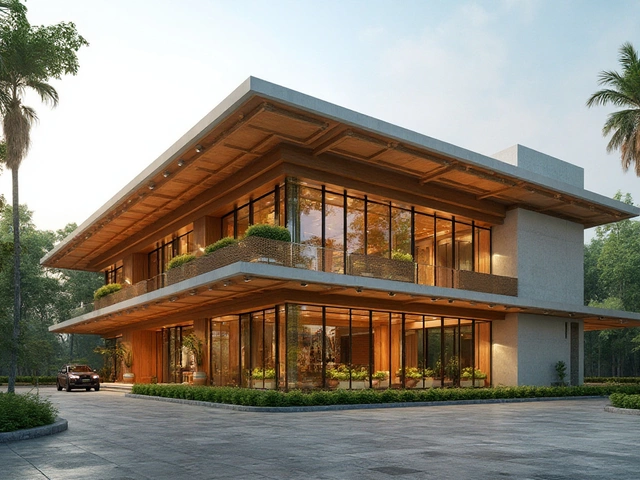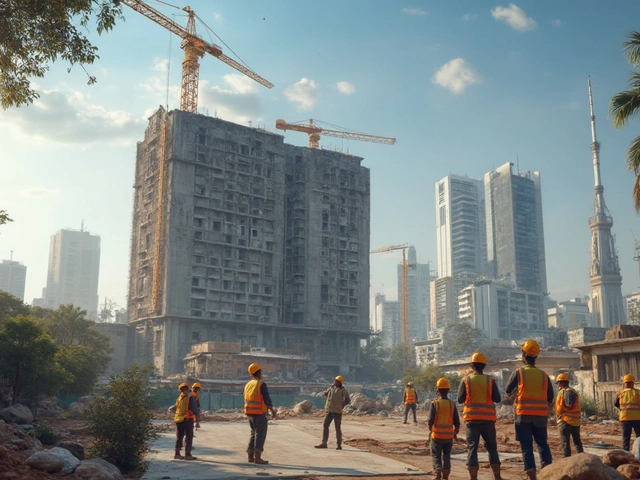Thinking about building a home but worried about breaking the bank? You're not alone! In 2025, many folks are looking to build their dream homes without the nightmare price tags. So, what's the secret sauce for cutting costs while not losing out on quality and comfort?
One popular path is exploring prefab and modular homes. These aren't your grandma's pre-made houses; we're talking customizable, sleek designs that can be a fraction of the cost of traditional builds. Plus, you’re saving time, which often means saving money. Imagine having a home ready in weeks rather than months!
Costs in construction often skyrocket because of material choices. Sticking with affordable, durable materials can hugely impact your budget. Think recycled wood or even shipping containers—refurbished to create cozy, modern spaces. Yes, it sounds a bit out there, but these methods are catching on for good reason.
In the next sections, we'll dive deeper into these techniques, shed light on the best materials to use, and uncover some innovative ideas. Whether you’re a first-time builder or a seasoned pro, these tips are sure to help you keep your project affordable.
- Current Affordable Building Techniques
- Materials That Save Money
- Prefab and Modular Homes
- Innovative Cost-Saving Ideas
Current Affordable Building Techniques
Let's talk about what's making waves in the home building world right now, especially if you're all about keeping things affordable. Gone are the days when building a house meant sticking to bricks and mortar. The scene has evolved, and there are some really innovative techniques out there that cater to a budget-friendly mindset.
First up, modular homes. These are like the Lego of the housing world. Pieces are constructed off-site in a factory setting, then transported and assembled at the location you choose. It's neat and tidy, saving on the unpredictable costs that can arise from traditional construction like labor delays. Plus, modular building can cut down the total building time by up to 50%.
Then we have prefab homes. Often confused with modular homes, but there's a slight difference—think of prefab as the umbrella term for any home that's been partially built off-site. Some parts or entire rooms come prefabricated, meaning you save on the customary site delays and labor costs. What's more, these homes are known for high energy efficiency.
Ever heard of recycled shipping container homes? They're a thing now! Transforming those huge steel boxes into cozy living spaces is not only cost-effective but also sustainable. You'd be amazed at how chic a container home can look with the right design tweaks!
Another cool method that's becoming more popular is using 3D printing technology to print homes. Yep, you've read that right. Imagine printing the walls of your home. This method uses special concrete mixtures and can create layers so fast it's like watching a home grow before your eyes—it's quick and cuts down on waste.
Finally, let’s not forget about using straw bale construction. Straw, a natural insulator, can be an excellent choice for those in drier climates. It's surprisingly durable and offers a rustic charm without the high cost of conventional materials.
- Modular homes: Only pay for what you use, fast to assemble.
- Prefab homes: Energy-efficient, partially built off-site.
- Shipping container homes: Eco-friendly, trendy, budget-friendly.
- 3D printed homes: Quick to build, reduces construction waste.
- Straw bale construction: Natural insulation, cost-effective in certain climates.
So there you have it. Whether you’re dreaming of a cozy container by the beach or a modular mansion in the suburbs, there's a world of opportunity to keep those costs low and spirits high.
Materials That Save Money
Let's talk materials. In the world of home building, your choice of materials can make or break the budget. Picking the right ones not only saves money but can also add a unique flair to your affordable building project. Here's where you can cut costs without cutting corners.
First up, recycled building materials are a great way to save. Things like reclaimed wood not only come at a reduced price but often bring a rustic charm to the table. It's like giving old materials a new life in your new home.
Ever thought about using shipping containers as your base structure? They're an eco-friendly and cost-effective alternative taking the world by storm. With a little imagination, you can transform these sturdy steel boxes into cozy, functional spaces. And yes, that's a big plus for those pursuing budget-friendly houses.
- Concrete slabs: These are often cheaper than traditional concrete foundations and offer great flexibility. They also work wonders for insulation, cutting down on heating costs.
- Bamboo: As weird as it might sound, bamboo is durable, flexible, and incredibly sustainable. Plus, it's cheaper than traditional hardwood.
- Recycled steel: Using steel that's already been produced reduces costs and supports sustainability. It's strong and great for structural frameworks.
It's also worth exploring composite materials. They're not just about strength and durability, but they're often lighter on the wallet than traditional timber. They're made from waste products, so you're saving the planet while saving money.
A nice little trick is keeping a close eye on local markets. Sometimes you'll find inexpensive surplus or salvaged materials that perfectly fit your needs. If luck's on your side, these can give a fresh twist to your cost-effective construction.
Lastly, innovations in sustainable building materials have opened up new avenues. From hempcrete to straw bales, these options are gaining popularity for being both economical and eco-friendly. So, keeping an open mind can literally pay off when it comes to selecting the right materials.
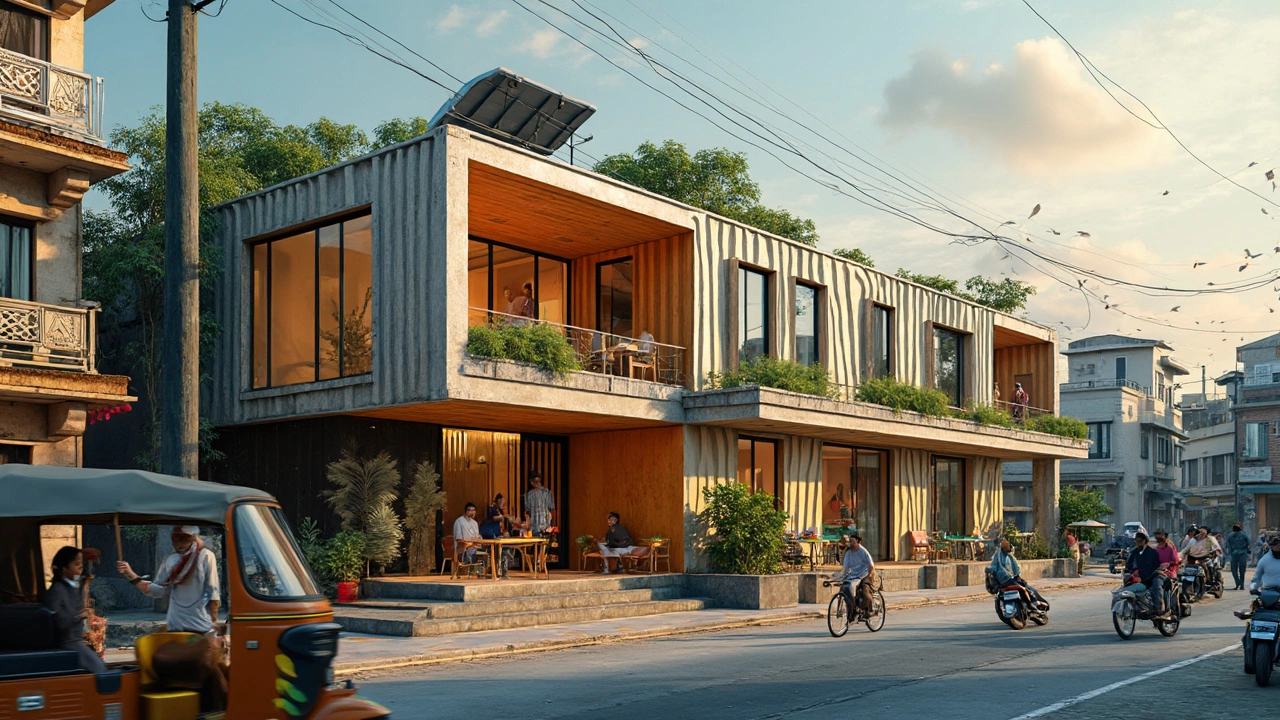
Prefab and Modular Homes
You might have heard the buzz about cheap homes and wondered if prefab and modular homes are part of the solution. Spoiler alert: they absolutely are! These types of homes have been around for a bit, but they're seriously gaining traction now, especially as people are looking for affordable building options.
So, what's the deal with prefab and modular homes? Well, the main appeal is their cost-effectiveness, and here's why:
- Factory Building: They're largely built in factories, which means fewer delays from things like weather, and smoother quality control. Everything from walls to the roof is built in a controlled environment, ensuring precision and reducing waste—saving you a pretty penny.
- Speed: Since parts are premade, assembling them on-site is usually quick. We're talking about weeks instead of traditional months—time, after all, is money.
- Flexible Designs: Don't think these are cookie-cutter boxes. Modern prefab homes offer creative design plans. Want an eco-friendly living space? Many options are packed with sustainable upgrades.
Some people worry about durability, but prefab homes today can be just as sturdy as any other. They often use strong materials that are cost-effective and designed to weather different climates.
Check this out: an average prefab home can start at about $50,000, way cheaper than the traditional build that often begins around $150,000. Just for fun, consider this basic comparison:
| Home Type | Estimated Starting Cost |
|---|---|
| Traditional Build | $150,000 |
| Prefab Home | $50,000 |
One thing to remember is local zoning rules. Not all areas are prefab-friendly. So, check those rules before you dive in. But once you do your homework, prefab and modular homes can be a sweet spot for cost-effective construction, offering a blend of affordability, speed, and style.
Innovative Cost-Saving Ideas
Let's talk about thinking outside the box—or maybe using the whole box itself! No joke, shipping containers are not just for shipping anymore. They're popping up as foundations for everything from vacation homes to cozy family dwellings. You can snag a used container for as low as $1,500. Add some insulation, windows, and voila, a sturdy and modern home structure at a fraction of the time and cost of traditional methods.
Another neat trick? Embrace the concept of tiny homes. These compact living spaces are not only adorable but extremely budget-friendly. Isn't it wild how many people are finding happiness in less than 400 square feet? With a little creativity, you can design a space that's chic, functional, and kind to your wallet.
You might also want to look into community resource sharing. No, it's not a buzzword tossed around; it's a legit money-saver. By pooling resources with others building nearby (like tools or even labor), everyone can save some cash. It's like a modern-day barn-raising, minus the hay and with way better coffee.
Renewable energy is another game-changer. Installing solar panels might seem like a big upfront expense, but consider this: it can wipe out your electricity bills over time. That’s right—many folks are getting to a point where they don’t pay for power at all, just from sunlight! Now that's a powerful way to keep those dollars in your pocket long-term.
Check this out:
| Strategy | Average Initial Cost | Estimated Savings |
|---|---|---|
| Shipping Container Homes | $10,000 - $35,000 | 50% less than traditional homes |
| Tiny Homes | $20,000 - $60,000 | Lower taxes and maintenance |
| Solar Panels | $15,000 - $25,000 | 80-90% savings on electricity bills |
So, next time you think about cutting corners, consider cutting-edge ideas instead. The future of affordable building is bright (and maybe a little solar-powered), offering tons of ways to build smart without spending big.
